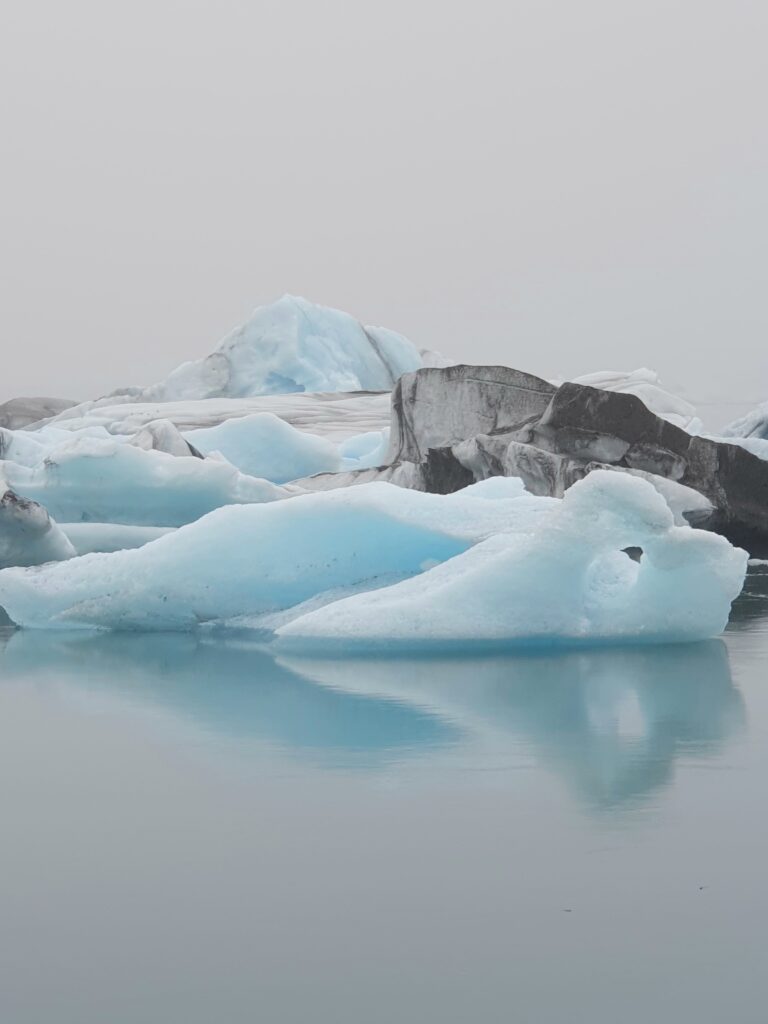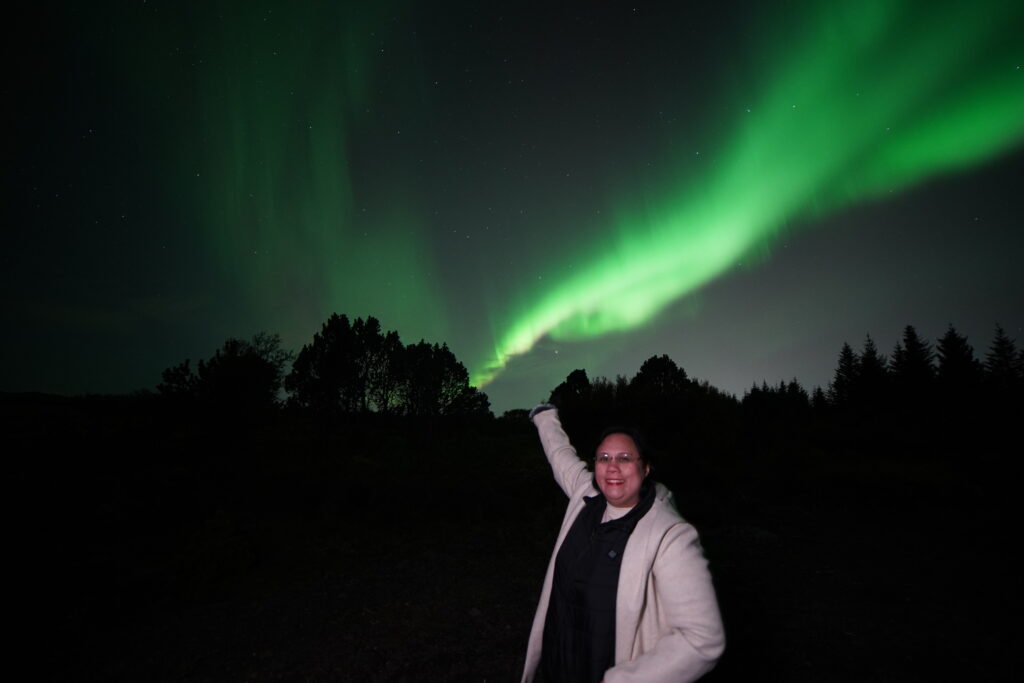Sometime around midnight, in the middle of a pitch-black field just outside of Reykjavík, my hands are freezing as I hold a cup of hot chocolate, trying desperately to warm myself up in the below-zero-degree weather.
Suddenly, our tour guide approaches the DSLR camera that he set up on a tripod and focuses it on the night sky. He points above the horizon and says the northern lights are finally appearing. For the next 30 minutes, we gushed while being awestruck by the ethereal dance of light and color across the Arctic night sky. Mother Nature truly outdid herself as graceful ribbons of green and even pink hues appeared, painting a celestial masterpiece above us.

Mid-September 2023, I traveled to Iceland to see with my own eyes the mesmerizing spectacle of the northern lights, or the aurora borealis. This elusive display of dancing lights in the night sky has captivated travelers for centuries, and after seeing them fill the sky with vibrant colors above, it’s easy to see why.
The northern lights are caused by electrically charged particles from the sun colliding with gas particles in the Earth’s atmosphere. This collision produces vibrant colors and hypnotic displays that are truly out of this world.
While seeing the northern lights is not guaranteed, there are ways to increase your chances of witnessing this astronomical spectacle.
If you’re heading to Iceland specifically to chase the northern lights, it is advisable to book a guided tour with experienced professionals. These local experts possess knowledge about the ever-changing weather and conditions, allowing them to guide you to the best spots and increase your chances of witnessing this extraordinary phenomenon.
I went with a tour group called Arctic Adventures and I was able to see the northern lights twice out of the three tours that I joined. It would be ideal if you could escape manmade light pollution and venture into the wilderness on a clear, cloudless night.
Another way to boost the likelihood of seeing Lady Aurora is to book your tour during the equinoxes which will take place on 20 March 2024 (spring equinox) and 22 September 2024 (autumn equinox). The equinox has periods of high geomagnetic electrical disturbance that increase your chances of witnessing this celestial phenomenon.

Experts predict that 2024 may bring the best auroras in two decades. This is because the sun will be reaching the peak of its 11-year cycle (called the “solar maximum”). During this time, solar activity will be greatest and the northern lights are predicted to be the most visible.
Glacier lagoon
While you’re in Iceland, another destination you need to add to your bucket list is Jökulsárlón Glacier Lagoon.
Prepare to have your senses overwhelmed as you explore this magnificent corner of the Earth boasting of shimmering ice formations. The ever-changing light, reflecting off the crystal-clear waters, adds an element of drama to the already awe-inspiring scenery.
Seeing the myriad shades of blue of the icebergs and the grandeur of glacial landscapes literally took my breath away. From translucent baby blues to vibrant turquoise and even deep sapphire tones, the spectrum of colors here is truly a sight to behold, making it easy to imagine that this is what heaven itself must look like.
Iceland, the jewel of the Nordic region, harbors some of the most incredible natural wonders on Earth. These include the Glacier Lagoon which offers a surreal symphony of blue and if you’re lucky enough, the majestic aurora borealis.
While the northern lights may remain elusive, your diligence and a sprinkle of luck might just reward you with a night of ethereal enchantment, leaving you awe-inspired by the dazzling dance of nature’s painted sky.
